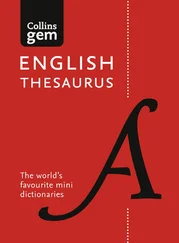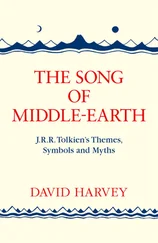Table 9: Upper secondary students – comparison of the four language areas
Table 10: Upper secondary students – general attitudes
Table 11: Upper secondary students – attitudes / EFL context
Table 12: Upper secondary students – listening to English accents 1
Table 13: Upper secondary students – listening to English accents 2
Table 14: Students of English studies – demographic information
Table 15: Students of English studies – exposure to English 1
Table 16: Students of English studies – exposure to English 2
Table 17: Students of English studies – exposure to English 3
Table 18: Students of English studies – words
Table 19: Students of English studies – lexico-grammar
Table 20: Students of English studies – spelling
Table 21: Students of English studies – reading
Table 22: Students of English studies – comparison of the four language areas189
Table 23: Students of English studies – general attitudes192
Table 24: Students of English studies – attitudes in the EFL context
Table 25: Students of English studies – attitudes / the future of English
Table 26: Students of English studies – listening to English accents 1204
Table 27: Students of English studies – listening to English accents 2
Table 28: Non-native English teachers – demographic information
Table 29: Non-native English teachers – exposure to English 1
Table 30: Non-native English teachers – exposure to English 2
Table 31: Non-native English teachers – exposure to English 3
Table 32: Non-native English teachers – words
Table 33: Non-native English teachers – lexico-grammar
Table 34: Non-native English teachers – spelling
Table 35: Non-native English teachers – use of individual sounds
Table 36: Non-native English teachers – use of stress patterns
Table 37: Non-native English teachers – comparison of the four language areas
Table 38: Non-native English teachers – general attitudes
Table 39: Non-native English teachers – attitudes / EFL context
Table 40: Non-native English teachers – attitudes / the future of English
Table 41: Native speakers of British English – demographic information
Table 42: Native speakers of British English – exposure to American English
Table 43: Native speakers of British English – words
Table 44: Native speakers of British English – lexico-grammar
Table 45: Native speakers of British English – spelling
Table 46: Native speakers of British English – use of individual sounds
Table 47: Native speakers of British English – use of stress patterns
Table 48: Native speakers of British English – comparison of the four language areas
Table 49: Native speakers of British English – general attitudes 1
Table 50: Native speakers of British English – general attitudes 2
Table 51: Native speakers of BrE – attitudes in the EFL and mother tongue context
Table 52: Non-native English speakers – the four language areas
Table 53: Non-native and native speakers of BrE – the four language areas
Table 54: Non-native English speakers – attitudes to BrE and AmE 1
Table 55: Non-native English speakers – attitudes to BrE and AmE 4
Table 56: BrE vs AmE in Teaching Materials – Comparative Overview
List of Figures
Figure 1: Survey participants
Figure 2: Non-native English speakers – exposure
Figure 3: Non-native English speakers – attitudes to BrE and AmE 2
Figure 4: Non-native English speakers – attitudes to BrE and AmE 3
Figure 5: Non-native English speakers – attitudes to BrE and AmE 5
Figure 6: Non-native English speakers – attitudes to BrE and AmE 6
Figure 7: Non-native English speakers – attitudes to BrE and AmE 7
Figure 8: Upper secondary students – reading
Figure 9: Students of English studies – reading
Figure 10: Students of English studies – attitudes to BrE and AmE 8
Figure 11: Non-native English teachers – attitudes to BrE and AmE 9
List of Abbreviations
AmE American English
BNC British National Corpus
BrE British English
CALD Cambridge Advanced Learner’s Dictionary
CEPC Cambridge English Pronouncing Dictionary
CEPD Cambridge English Pronouncing Dictionary
CIDE Cambridge International Dictionary of English
CLIL Content and Language Integrated Learning
CMC Computer Modulated Communication
COCA The Corpus of Contemporary American English
CUP Cambridge University Press
DiVa Digitala Ventenskapligiga Arkivet (Swedish academic archive online)
D-T German Teacher (informant)
EE Estuary English
EFL English as a Foreign Language
EIL English as International Language
EiM English in Mind 11e
ELF English as a Lingua Franca
EMF English as a Multilingual Franca
ENL English as a Native Language
EngEng English English
ESL English as a Second Language
EULA Europalehramt (European Teacher Courses)
FBLL Film-based Language Learning
GA General American English
GUPEA Gothenburg University Publications Electronic Archive
HoPro Hohe Promenade (Senior High School in Zurich)
HOTS High Order Thinking Skills
ICT Information and Communication Technologies
IDEA The International Dialects of English Archive
KHK Kollegium Heilig Kreuz (Senior High School in Fribourg, Switzerland)
KJV King James Version (Bible)
LFC Lingua Franca Core
LPD Longman Pronunciation Dictionary
MAE Mid-Atlantic English
NAmEng North American English
NNS Non-Native Speakers
NS Native Speakers
OALD Oxford Advanced Learner’s Dictionary
OAWD Oxford American Wordpower Dictionary
OEC Oxford English Corpus
OED Oxford English Dictionary
OILE Online Informal Learning of English
OSD Oxford Student’s Dictionary
OUP Oxford University Press
OW Oxford Wordpower
PH Pädagogische Hochschule, Freiburg, Germany (University of Education)
R Rank
RP Received Pronunciation
RSC Royal Shakespeare Company
SOED Shorter Oxford English Dictionary
TBL Task-Based Learning
THG Theodor Heuss Gymnasium (Senior High School in Freiburg, Germany)
UK United Kingdom
US United States
VOA Voice of America
VOICE Vienna-Oxford International Corpus of English
WSSE World Standard Spoken English
1. Introduction and Research Objective
By the end of the 19th century, Britain had established the prerequisites for English as a global language, especially due to communities of English speakers who settled nearly everywhere around the globe, along with the existence of patterns of trade and communication. Yet, this world position of English might have been compromised as a result of the British Empire’s decline, had there not been the dramatic rise of the United States in the 20th century as a world power. From this follows that, although Britain doubtless made English an international language in the 19th century, the USA was nonetheless the driving force for its globalisation process in the 20th century and it still is today. Consequently, owing to the economic supremacy of the new American superpower, its variety of English was successfully promoted, and this linguistic Americanisation spread into virtually every corner of the planet to such an extent that it also made inroads into European and other languages. With the passing of time, the British were bound to partly give up their proprietorial attitude towards English in favour of the increasing influence of American English (henceforth abbreviated to AmE), whose quasi-ubiquity clearly needs to be acknowledged.
Читать дальше












